As gardeners, we spend a lot of time and money to protect our plants from pests. However, some so-called “pests” are beneficial. Look for these 8 pests and rejoice that your garden is a healthy habitat and your strawberries are being guarded!
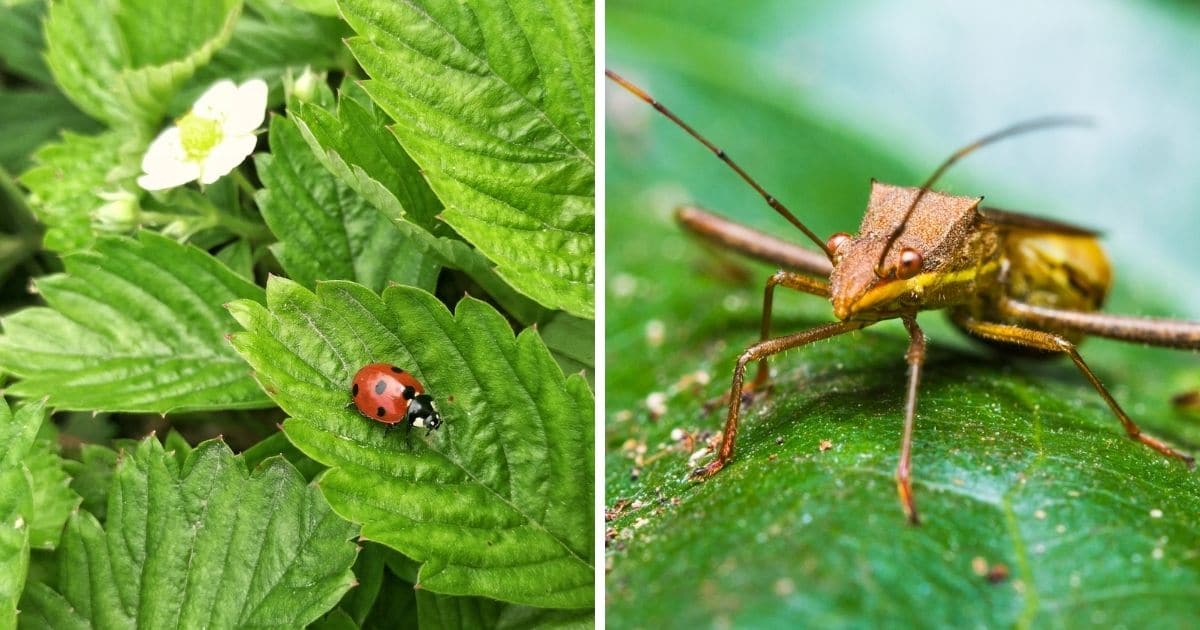
Jump to:
Assassin Bugs
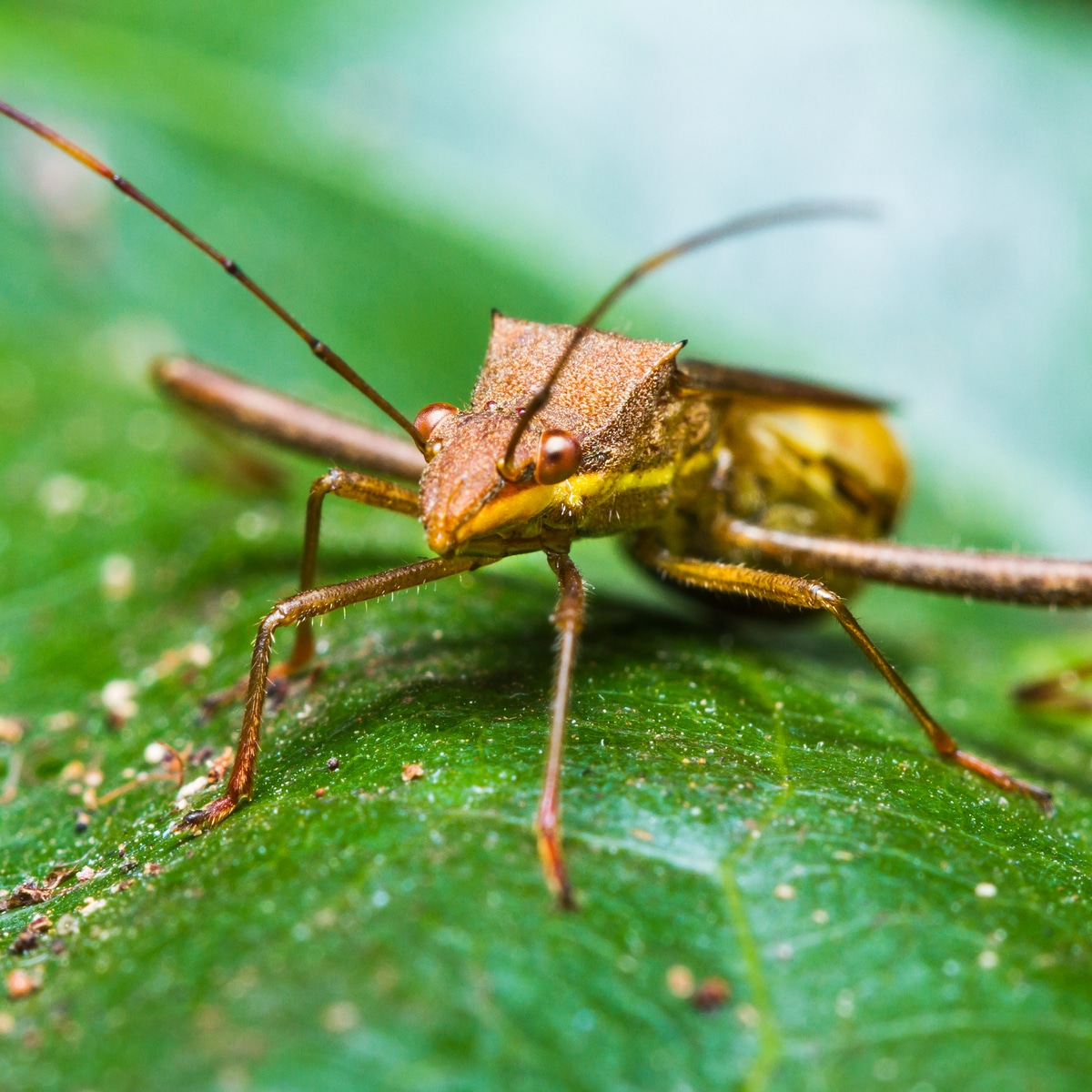
Assassin bugs effectively control a wide variety of harmful insects. You can buy assassin bugs, but it is better to attract native assassin bug species to your garden instead.
Assassin bugs sometimes bite humans if handled carelessly so leave them alone to attend to your strawberry garden.
If you have assassin bugs in your garden or are trying to attract more, also attract more pollinators because they will eat almost any insect that crosses their path.
Predatory Mites
Twospotted spider mites are a common garden pest but predatory mites (specifically Phytoseiulus persimilis and Neoseiulus californicus) are great at controlling them.
Predatory mites are almost identical to their prey, but you can tell them apart by the predatory mite’s shinier, unspotted body and longer legs. Don’t wipe them out by mistake!
Lacewings and Ladybugs
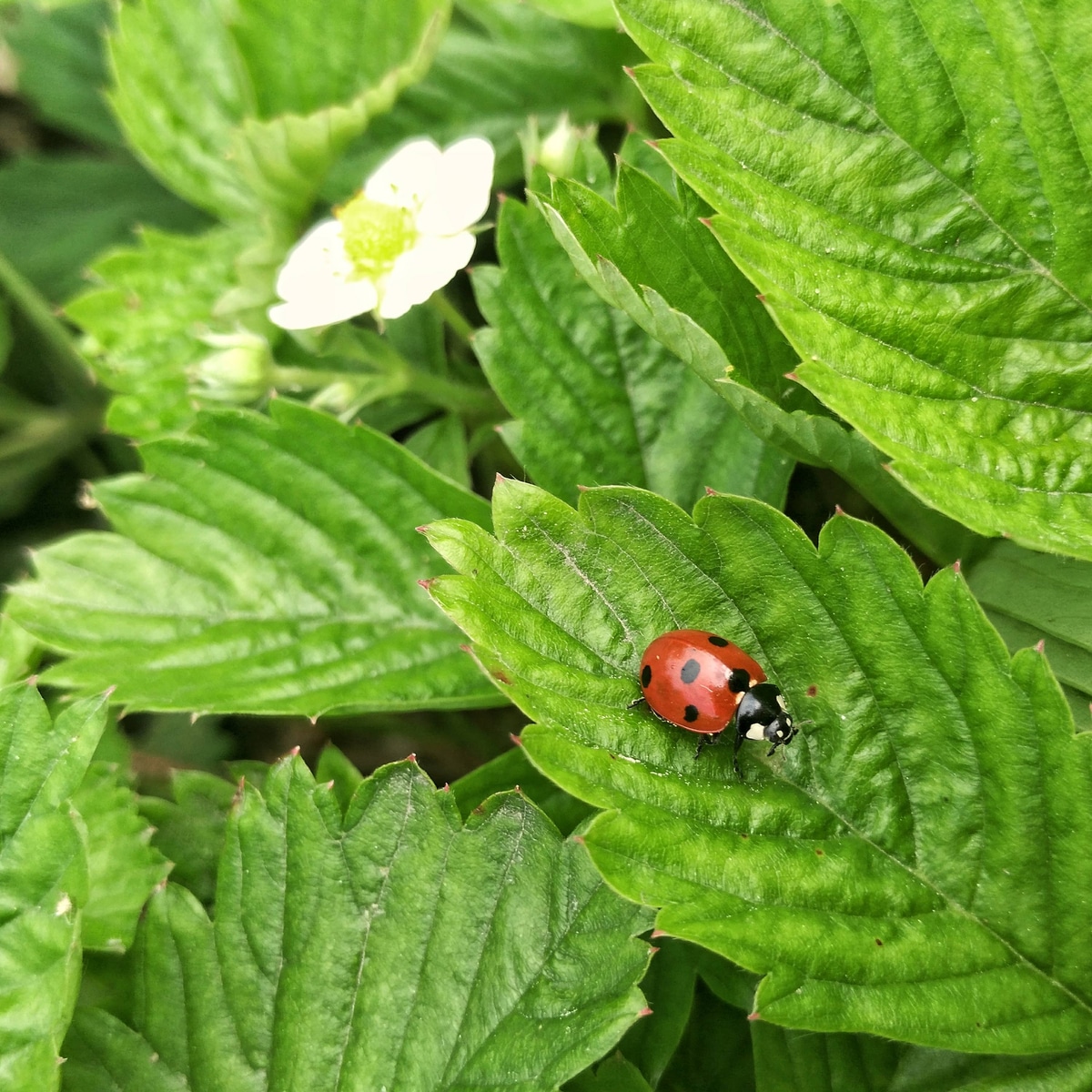
Ladybugs are well-known for controlling aphids but lacewings are also champion aphid eaters. When they reproduce, the lacewing larvae devour many soft-bodied parasites in addition to aphids.
The adults eat pollen and nectar so invite them to stay in your garden by planting flowers like yarrow, Queen Anne’s lace, and coreopsis around your strawberries.
Parasitic Wasps
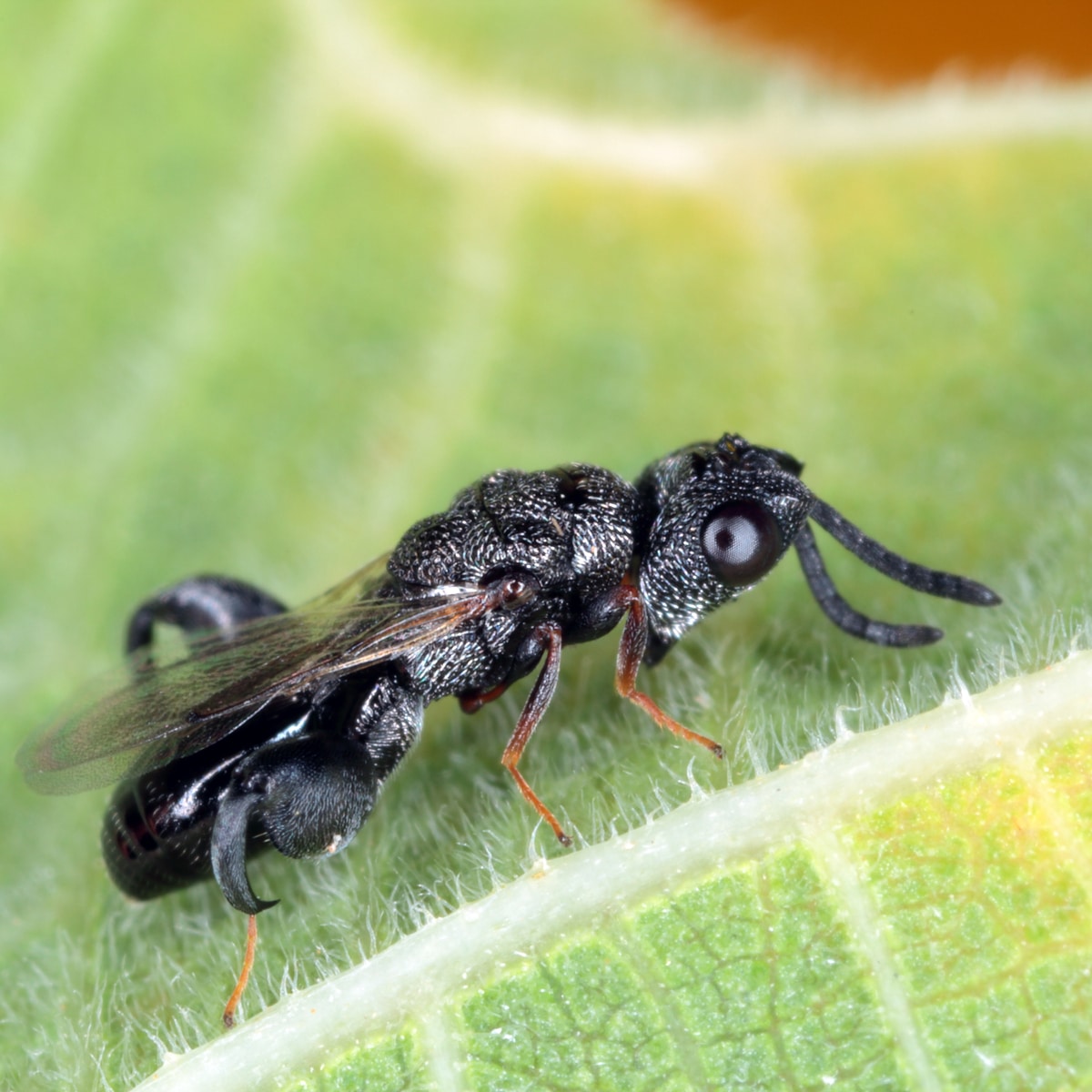
Parasitic wasps control aphids, as well as armyworms and other caterpillars. Parasitic wasps do not sting or bite. This sneaky insect lays her eggs inside the soft bodies of plant-eating pests and the larvae eat their way out of the host.
Adult parasitic wasps eat pollen and nectar so they are easy to attract with a variety of plants and herbs. Try planting yarrow, Queen Ann’s lace, sweet alyssum, dill, and fennel near your strawberries to draw them in.
Minute Pirate Bugs
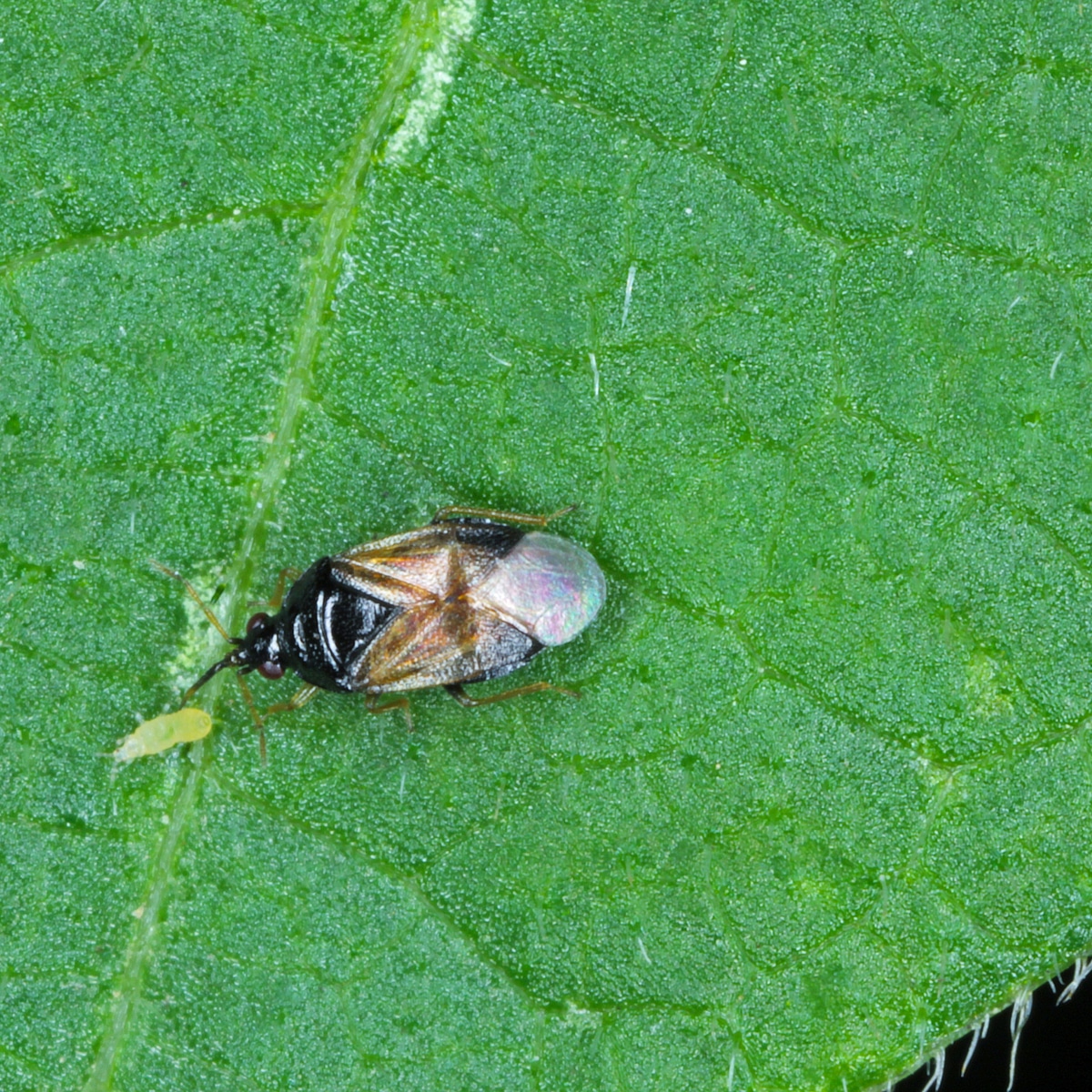
Pirate bugs control thrips and lygus bugs (aka tarnished plant bugs). Pirate bugs are attracted to pollen and nectar-rich flowering plants and the soft-bodied insects that attack them. If they don’t find their own way to your strawberry garden, you can purchase them online.
Six-spotted Thrips
Speaking of thrips, did you know there are beneficial thrips? Six-spotted thrips control two-spotted spider mites. Six-spotted thrips are tiny so they can be hard to spot and even harder to tell apart from their harmful counterparts.
Examine a specimen on a piece of tape before resorting to insecticides. Predatory six-spotted thrips have light gray-brown bodies and thin white wings with six black spots plus two black spots on their head.
Centipedes
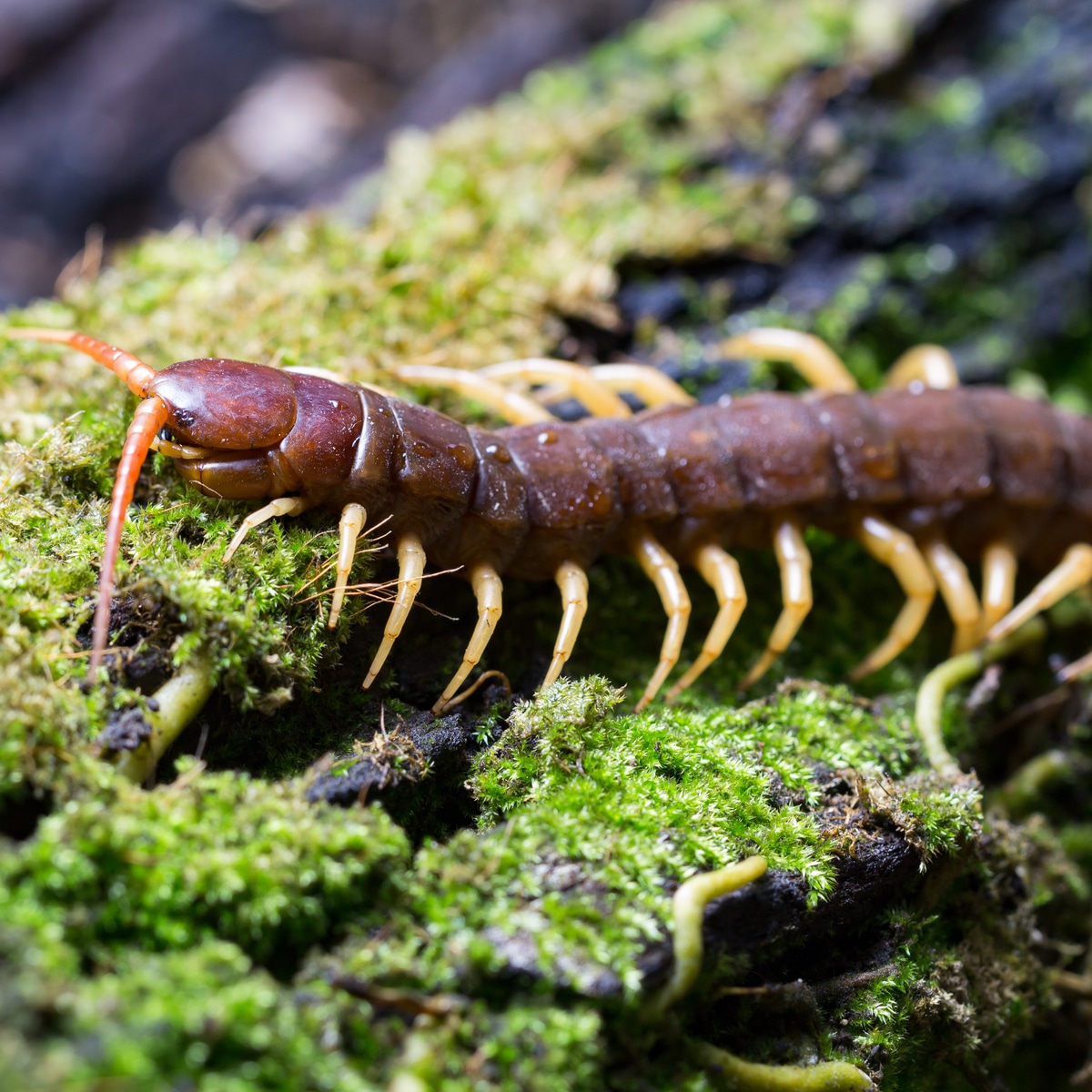
Centipedes control slugs, snails, aphids, and other harmful insect larvae. They also greatly improve soil health. Centipedes like dark, moist, organic soil with hiding places like fallen leaves or decaying logs. They can often be found under garden stepping stones. Create a home for them in or near your strawberry patch by incorporating one or more of these features.
Know the difference between millipedes and centipedes. Millipedes eat plant matter and especially love strawberries. They love the same type of habitat as centipedes. Consider separating your centipede hotel and your strawberries with a compost pile to distract millipedes.
Remember, some bugs are beneficial to the garden. Some of the harmful insects mentioned in this list can even benefit your strawberries in small numbers. Avoid using insecticides where possible and invite in beneficial bugs instead!

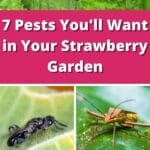






Jennifer Hanks says
Great articles, thank you!